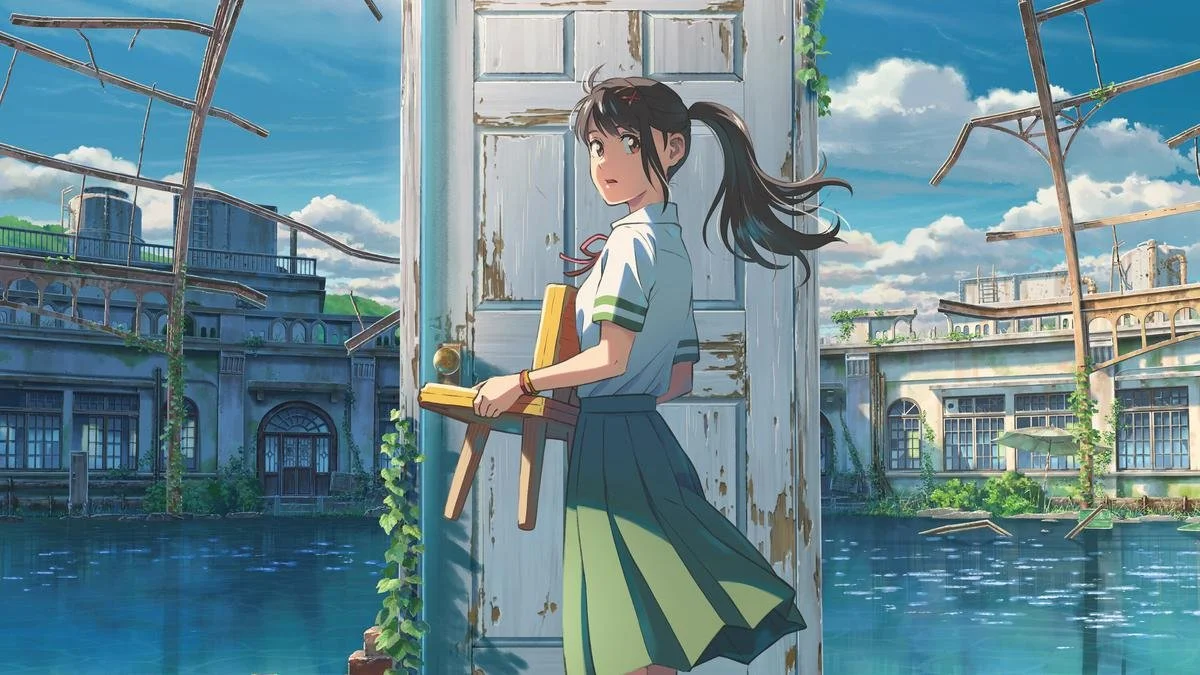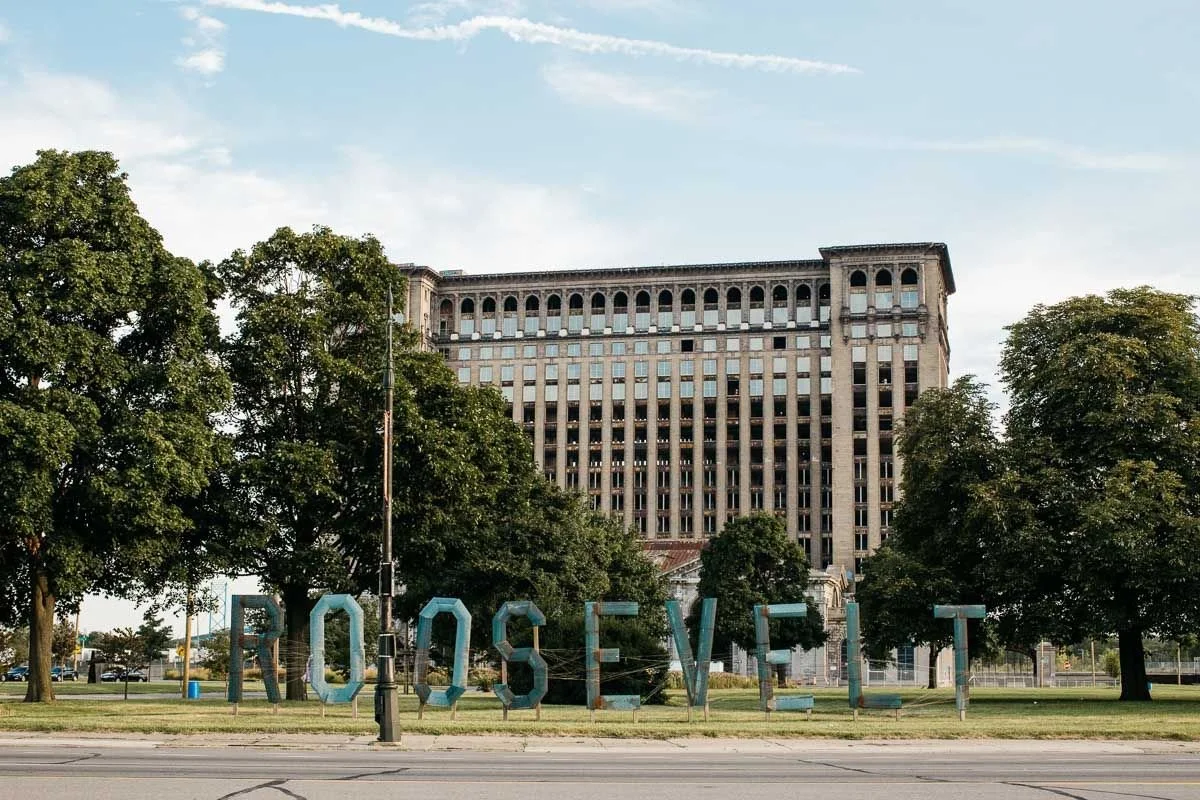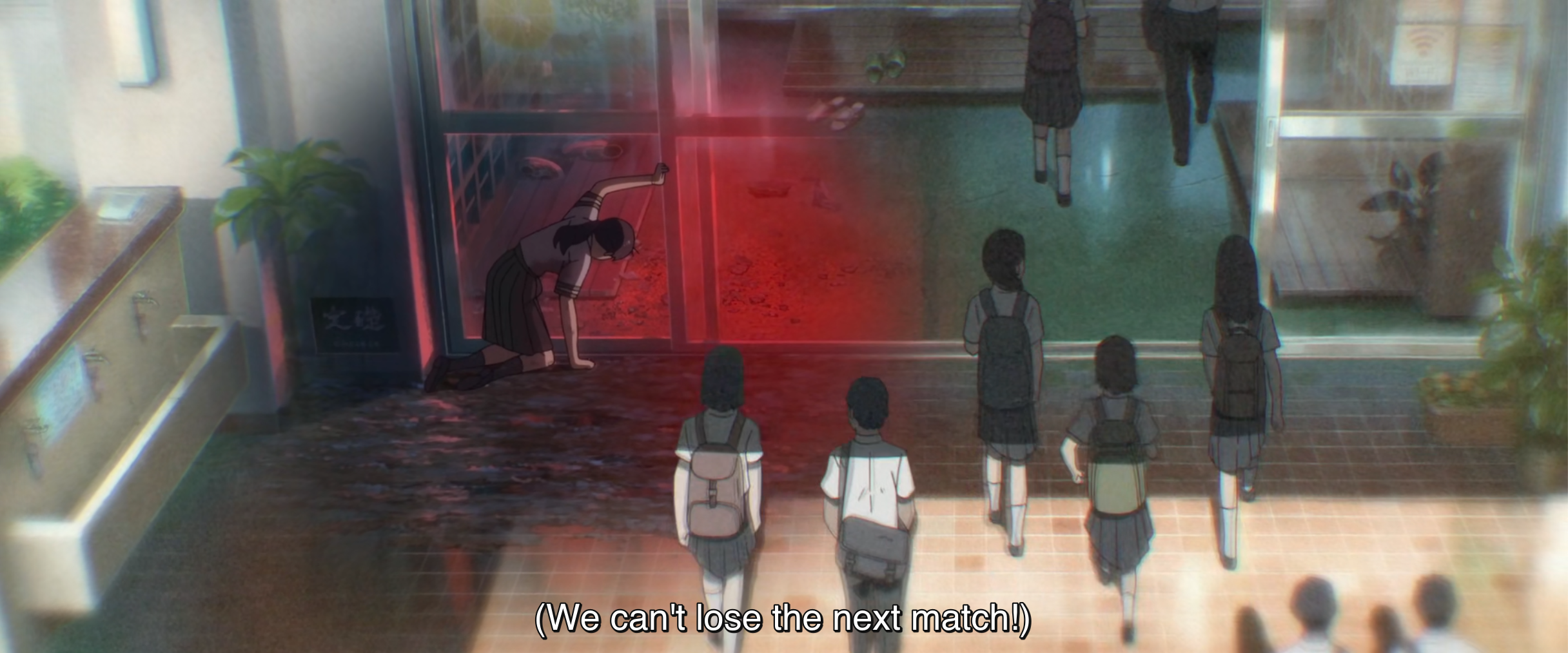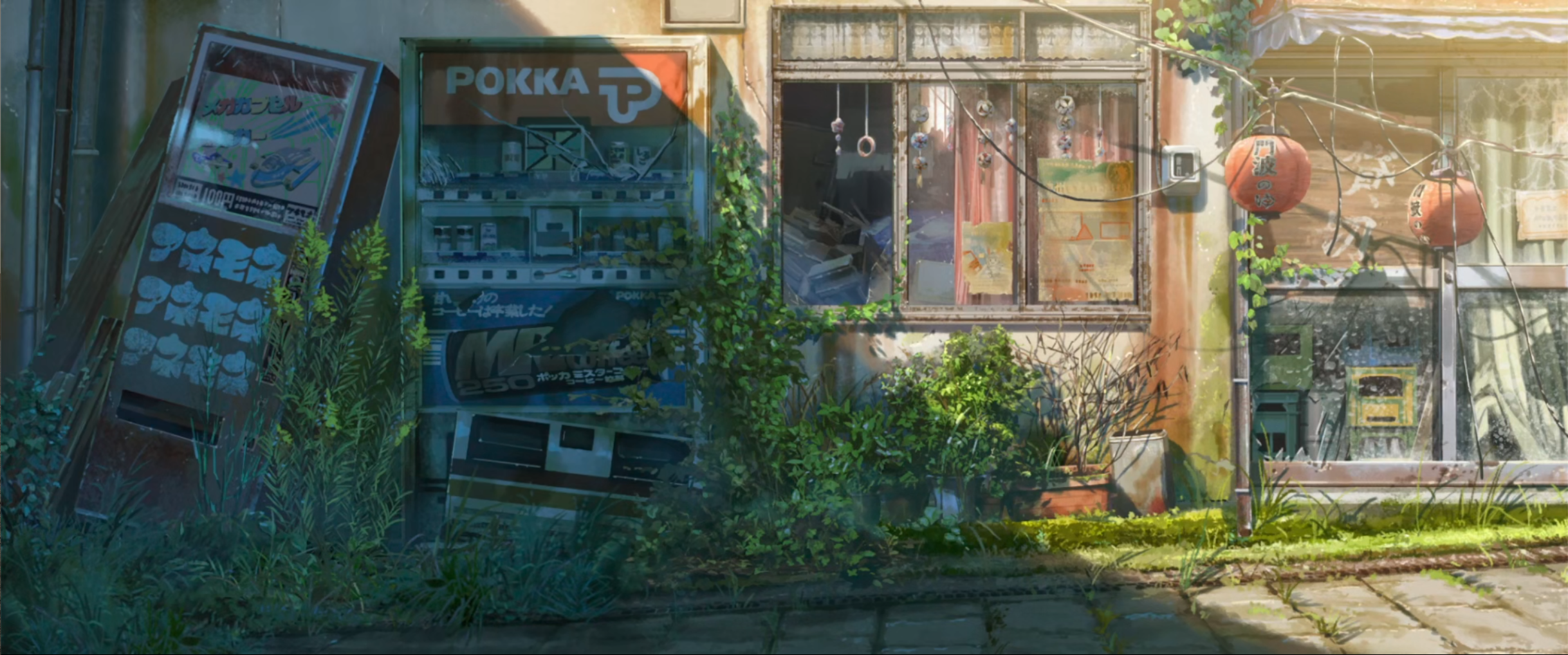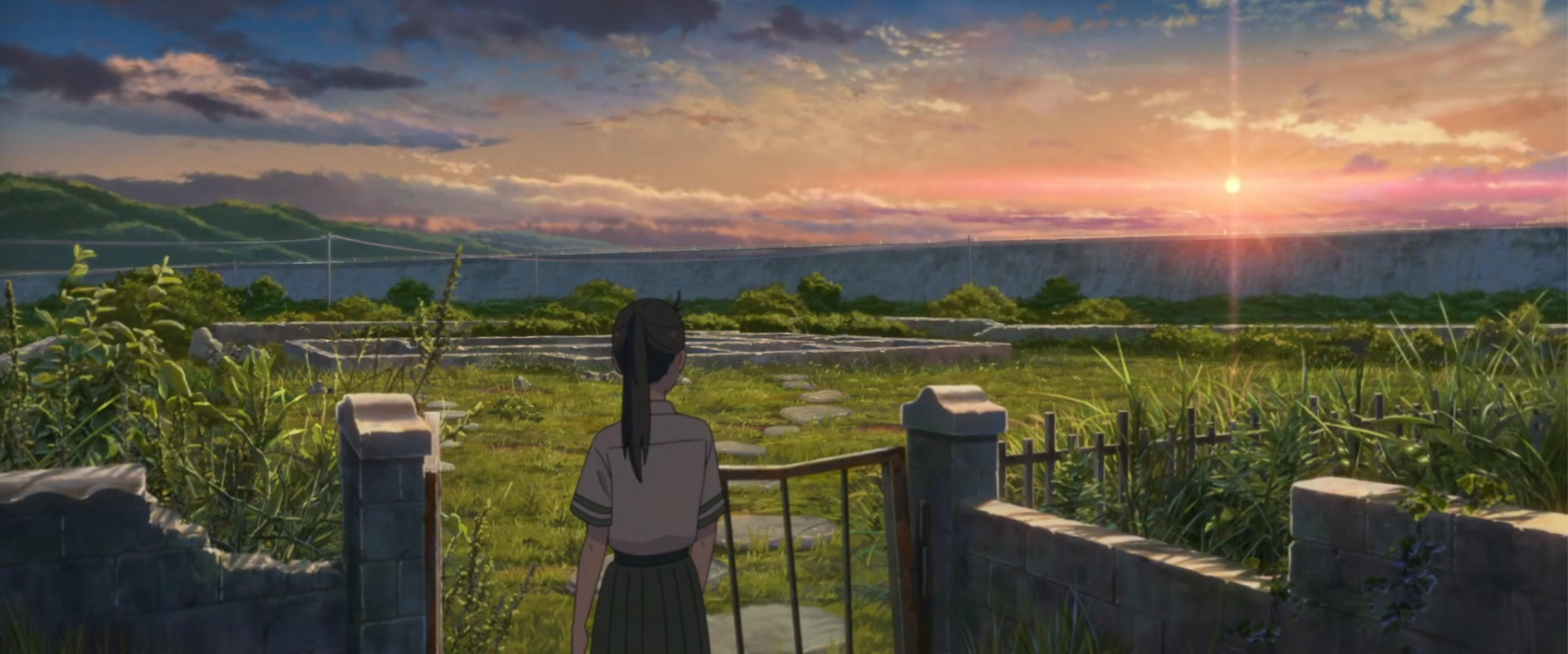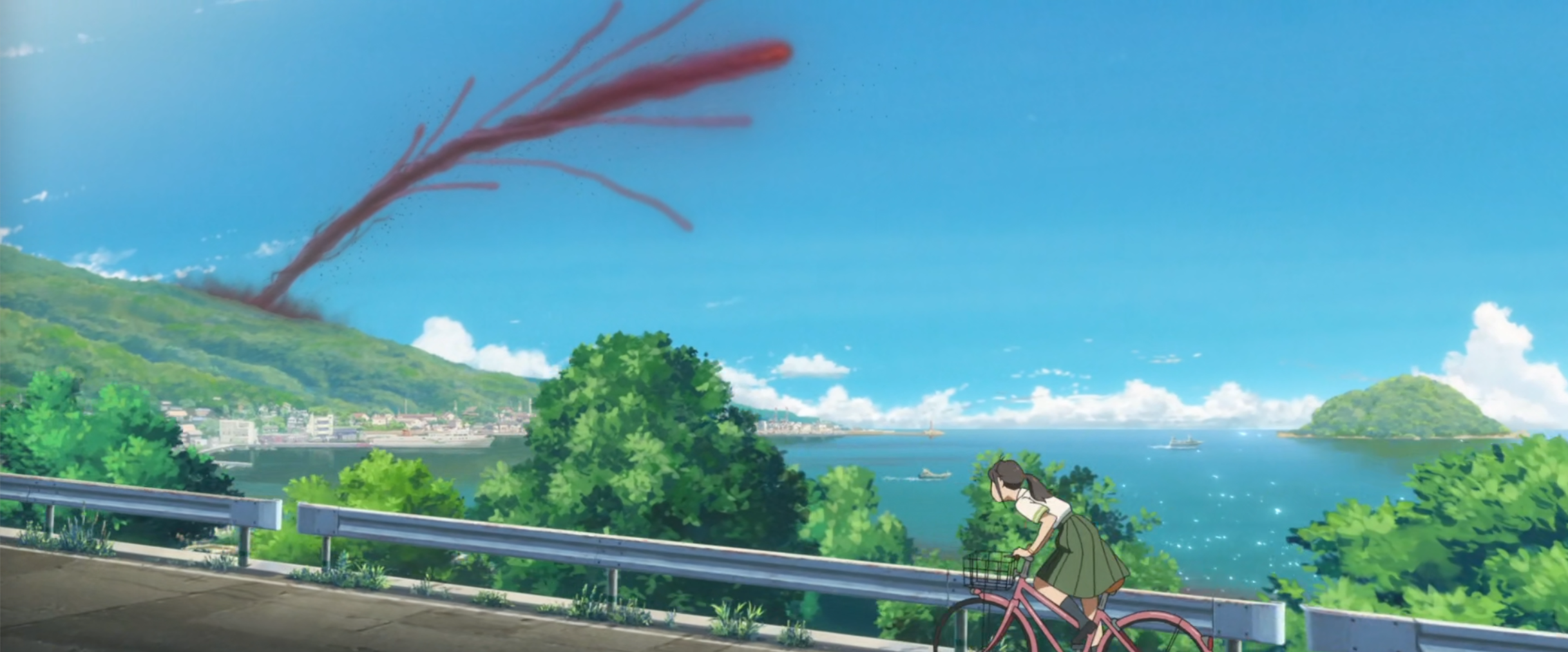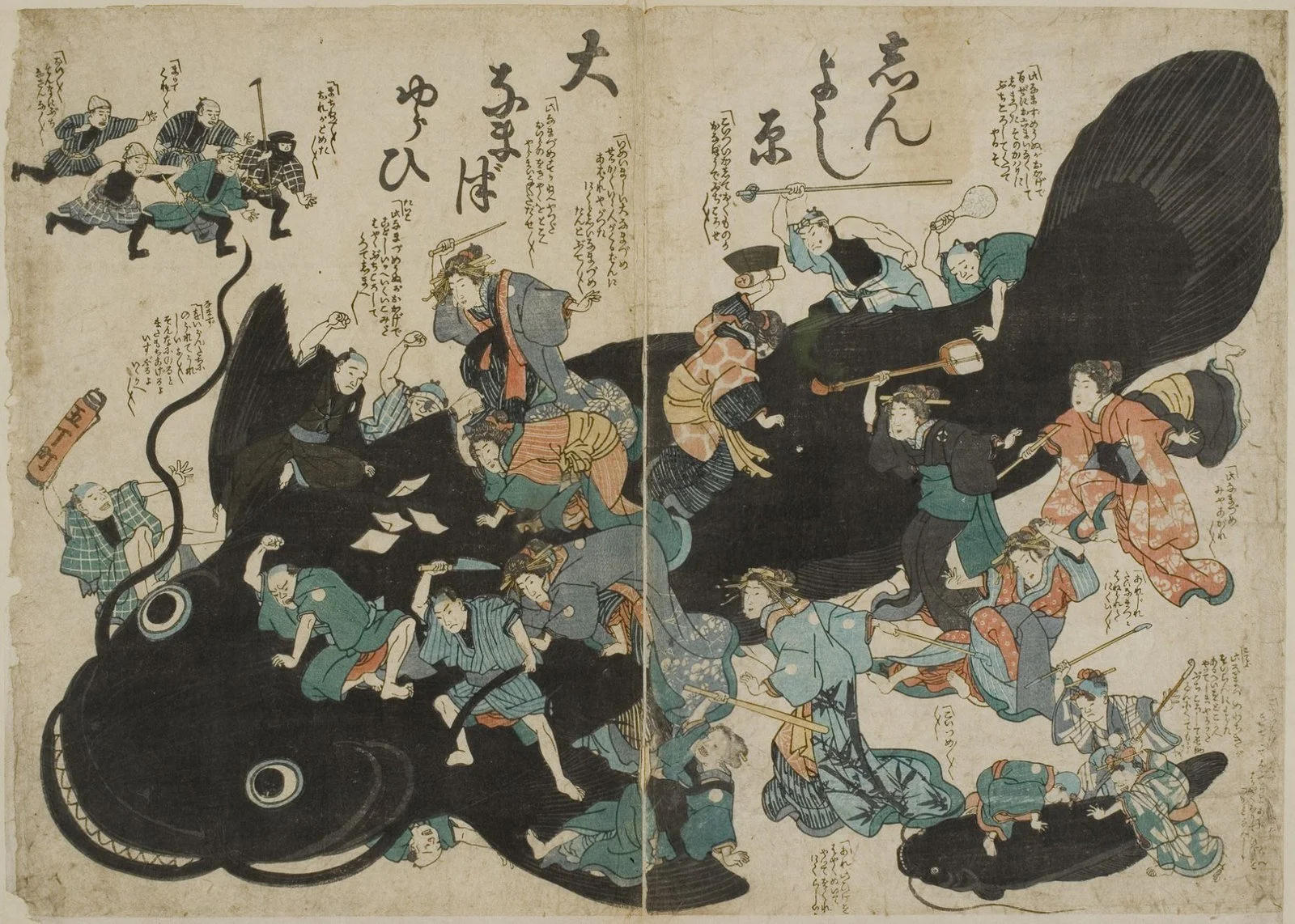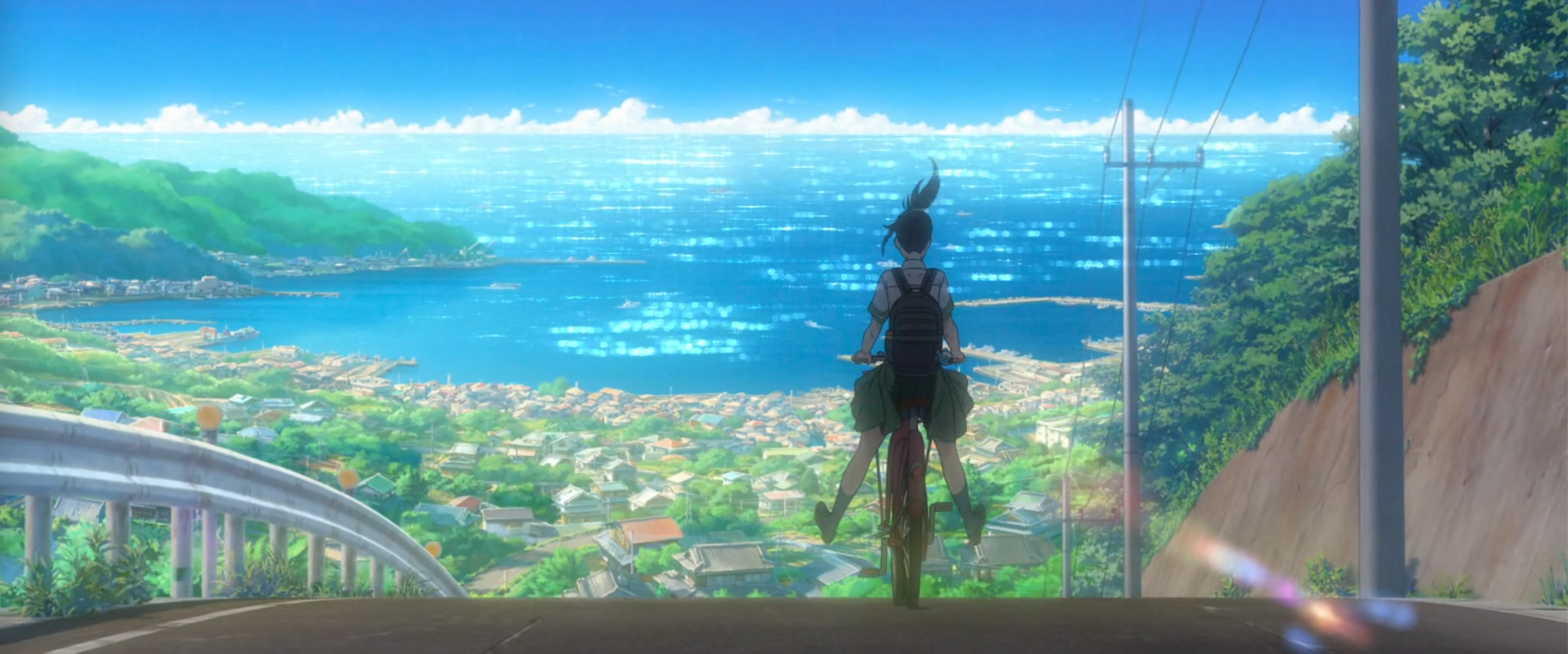Place and Memory in “Suzume”
Toho
Growing up in Detroit, there’s a natural inclination to be curious about the history of places. Perhaps the pre-eminent site of ‘ruin porn,’ deserted buildings abound, covered in graffiti or lacking windows, places from great stone megaliths to wooden single family homes. Of course, since Detroit’s ‘renaissance,’ many of these buildings have been rehabbed, reclaimed, sold to the highest bidder in an effort to give them new life. Gone from Corktown’s Roosevelt Park are the giant green metal letters some hipsters must have put up in the late 2000s, in its place a sleek new sign announcing the park, as Ford renovates the old Michigan Central Train Station behind it.
It might be why one of my favorite Talking Heads songs is “(Nothing But) Flowers”, David Byrne’s tropical-tinged ode to “honky tonks, Dairy Queens and 7-Elevens” amidst a fictional, totally natural paradise set in the future. Turning songs like “Big Yellow Taxi” on their head, it’s about a world where development has been reversed, highways making way for mountains and rivers.
In his lament about a world returned to nature, stripped of its late twentieth century signifiers, he bemoans that “as things fell apart, nobody paid much attention,” as apt a description for post-1950s Detroit as any. But in his arch lines, reminiscing about what used to be a Pizza Hut that’s now covered with daisies, what Byrne hits on is our memories of places. The same way Byrne’s character has nostalgia for billboards and wistfully remembers when a cornfield used to be a discount store, we look at places big and small, in any city, and remember what they used to be. It doesn’t have to be an abandoned train station, it can be a trendy new café that used to be a video rental store, or an expensive condo complex that once was a baseball field. It’s a song about all the little tawdry, insignificant things in our life that we miss as time goes past, even if they’re replaced with something said to be objectively ‘better.’ If they were returned to glorious nature, we’d still miss the Target and the In-N-Out and the stupid lawyer billboards, against our better judgment.
Makoto Shinkai’s latest film Suzume no Tojimari reminded me of the song and its themes of places and memory, but with a slight twist—in Suzume, the places themselves have memories. The spaces of the film, frequently either ruins or areas given back to nature, are given their own agency, beyond just what people remember of them. In fact, the places demand that the characters remember them, in order to avoid catastrophe in the form of natural disasters.
Memory feels like it should be a human trait, something that only a brain is capable of holding, refracting what is past through what is now, highly subjective and often fraught with painful feeling. But Shinkai’s film, so in touch with the energy and spirit of what is around us, says that places hold memories within and it’s up to humans to interpret them, to get on their wavelength and care enough about a place to see all the versions of it, what it has been throughout time, the people who have passed through, the ways it has been changed and destroyed and rebuilt. People can construct their memories of a place, but they need to listen to the place’s own memory too.
At the film’s center are two characters who have to do just that; the Suzume of the title is a high school girl living in the small city of Miyazaki in Kyushu, who one day has a chance encounter with a college student named Souta who says he’s looking for a ruin. She points him to an abandoned resort nearby and continues on her way to school, only to be nagged by the feeling that she should go there herself. Stepping over downed cables and plant overgrowth, she calls out for Souta at the ruin, until she reaches its center, where in the middle of a still pool of water a lone door stands.
Toho
Intrigued, Suzume opens the door, unveiling a celestial world beyond, an open field underneath a brilliant night sky full of stars. When she takes a step into it, the door spits her back out the other side. She sees a stone sticking out of the ground near the door, which she pulls out to reveal a cat-shaped figurine. In her hands, the figurine turns into a ball of fur; panicked, she tosses the fur ball and runs out of the ruin back to school.
At school, there’s an earthquake warning, sent to all of the students’ phones and met with a mix of concern and annoyance, desensitized to the notifications after years of getting so many. But only Suzume can see what looks to be a giant red cloud of smoke snaking up into the sky from the site of the old resort. She returns there, to the door, to find it wide open, spewing this red smoke from within, and Souta trying with all his strength to close it. She joins him and they close it together.
As it turns out, Souta is a ‘closer,’ inheriting a centuries-old family vocation to travel Japan and close gates to the ‘ever-after’ just like the one at the old resort. These portals open periodically when that red smoke, really a ‘worm,’ beckons to get free and cause disaster. While Souta’s closer-hood was passed down to him, Suzume has her own connection to gates, as she found and went through one as a young child, finding herself in the ever-after. The cat figurine that Suzume removed was really a ‘keystone,’ one of two god-like cat beings that act as the last line of defense between our world and the worm, and now that she’s set one loose, doors across the country will start opening, setting her and Souta (who’s been turned into a chair now, don’t ask) on a summer roadtrip with super high stakes.
But there’s a specific process to follow in closing these gates, the theme of which is articulated later in the film by the second keystone, also set loose as a cat: “Return everything as it was, with human hands.” Gates must be closed not only by humans, but by humans remembering the places as they once were. At every stop on their journey, Suzume and Souta come across a gate that’s come open, and upon reaching it, have to communicate with the place that it’s located in. Closing their eyes, though they’ve never been there before, they find themselves able to picture the place as it used to be, when it was full of people going about their days. They can hear the conversations, the “hello”s and “good morning”s and “see you tomorrow”s. Once they reach that level of understanding of the place, they recite a little prayer: “O Divine Gods who dwell beneath this land, you have protected us for generations. Your mountains and rivers that we have long called our own, I return them to you!”
Then, with a key, they lock the door, stopping the worm from escaping. “Hear their voices, and they’ll hear us,” Souta explains to Suzume when describing how to close the gates. The use of doors to signify these places works on a couple of levels. Of course, it’s a portal between worlds, something that can be opened and closed, locked and unlocked. But it’s also an entryway, a site of welcome, of invitation. They are being urged to recognize and show respect for the place, not giving the place its memory, but healing it by listening to its history, opening themselves to what it holds inside. They have to give it a voice that it cannot give itself, which in the case of all of these places is typically a sorrowful one.
Toho
That’s because these doors are all at sites of loss, starting with the abandoned resort in Miyazaki. As Suzume and Souta travel northward through the country, they find a door at an old school that was destroyed by a landslide, one at a closed amusement park in Kobe, another underneath the Tokyo subway, and finally, most poignantly, a gate at the site of the 2011 Tōhoku earthquake. Each site they go with a door, there’s a reason a door is there—something happened there, whether it’s the quiet way a city moves on (the amusement park closing), a local natural disaster (the landslide), or a seismic, tragic national event (the earthquake). Even in Tokyo, nothing has happened too recently, but there’s a door there because over the centuries, the millennia, those disasters have happened and the wounds are still there, healing and re-opening. These places, the land, it doesn’t forget, it carries these traumas within itself forever.
Toho
In the case of the resort at the beginning of the film and the amusement park in Kobe, the ‘pain’ is more quotidian, more humdrum. In Kobe, the woman that Suzume stays with mentions what happened to the park: “Things went downhill. Now they don’t even have enough money to tear it down. There’s a lot of lonely places like that these days.” It’s true, how it seems today that you can’t help but run into these places that have been forgotten, or left behind by time, that fall into disrepair as the times change and people change and things like a small theme park aren’t as much of an attraction anymore. At the park is a sign: ‘Notice of Closure. Thank you for 40 amazing years.’ A familiar sight, especially post-pandemic.
Meanwhile the site of the earthquake, saved for the emotional conclusion of Suzume’s journey, is the kind of disaster that stops the world in its tracks. It’s clear from the outset that this area differs from the other towns and cities Suzume has stopped in, as she bicycles through a mostly-empty countryside, passing by a truck towing away hazardous waste. We’ve known that Suzume lost her mother when she was a child, and the film begins with young Suzume wandering around what we now know to be the ever-after, but it’s not until she arrives at her house that we can put two and two together. Her house is no longer a house, only a foundation—all the other houses around it are the same.
Toho
She unearths an old diary from a buried time capsule, and as you watch her flip through it, you see the dates and know what’s coming. When she reaches March 11, young Suzume had blocked out the pages from that day and those that followed with thick black crayon. Looking through them now, she can hear all the conversations from that time, as she asked adult after adult where her mother was.
Suzume has been told she has to go to this place because it’s where she first saw a gate, when she was a lost child looking for her mother and had no idea what it really was. She’s returned there to replace the keystones and restore order, re-entering the same gate from eleven years ago. Of all the gates in the film, this is the only one that isn’t located in a communal site: a school, a park, a subway. But it’s really at the ultimate communal site, the site of national tragedy.
Regardless of their specific past, running through all of these places is the thread of collective trauma as embodied by the worm. The worm has an antecedent in Japanese mythology: Namazu, a giant catfish that lives deep in the earth under Japan, causing earthquakes and tsunami when he thrashes his tail. While Namazu has on occasion been portrayed in a positive light, in particular as the “god of world rectification” following the 1855 Edo earthquake, Shinkai’s worm is a more primeval thing: angry and red and at times phallic (!), once loosed from the ever-after it sinks its tendrils into the bright blues and greens of Miyazaki, or swirls menacingly over Tokyo at dusk.
Toho
Shin Yoshiwara ōnamazu yurai. Anonymous. Tokyo University Library.
It looks like pain embodied, snuffed out for a time only to come raging back, the way an unhealed wound festers. That’s not to say it’s some karmic retribution for the ills of man, but rather something more natural, unavoidable—the pain that all places naturally take on as time goes by, sometimes accelerated by human behavior in the case of climate change or the destruction capitalism leaves behind, but inevitable all the same. It reflects the cycling of time, the repetition of history: as in the case of the Tōkai earthquakes, every 100 years, a new disaster.
Meanwhile, where the worm emanates from, the ever-after, is a place where “all time exists simultaneously.” The ever-after is “the world’s other half,” a place where no human can go. Contrasted with the chaos of the world outside, the ever-after is quiet, undisturbed, an open field with the purplish night sky sparkling above. In holding all time at once, it’s somehow unburdened by it—to carry all moments, past and present and future, is to make all of them a blip, all of them a single star in its constellation. The ever-after beckons to Suzume as it surely does all people, with its allure of the unknown, the peaceful, the departure from our world.
It’s rendered just as beautifully as all the other places Shinkai depicts in the film: all shimmering with light, impeccably detailed, lively with people and food and things. You feel his respect for all places, from ancient mountains and rivers to karaoke bars in Kobe. In his care for each setting, it’s as if he’s wondering, “who knows if one day this town, this house, this train station, will exist? Will people remember it this way?” You can imagine a ‘closer’ in 100 years trying to access the memory of one of these places, hearing the conversations, seeing the light filter through the windows, to close its gate.
Toho
